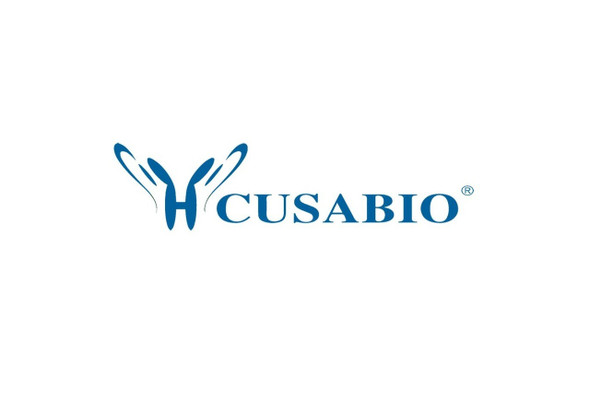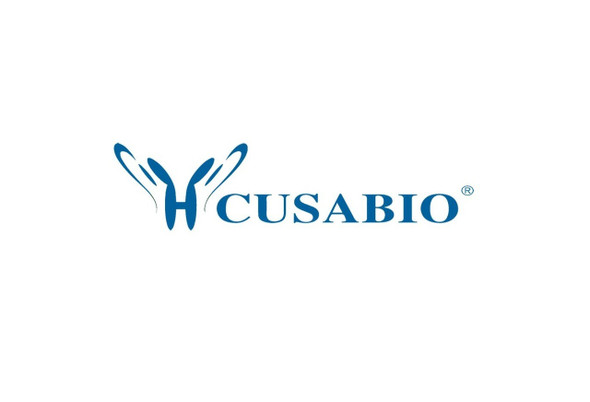Cusabio Active Proteins
Recombinant Human C-C motif chemokine 23 protein (CCL23) (Active) | CSB-AP000961HU
- SKU:
- CSB-AP000961HU
- Availability:
- 5 to 10 Working Days
Description
Recombinant Human C-C motif chemokine 23 protein (CCL23) (Active) | CSB-AP000961HU | Cusabio
Protein Description: Partaial of NM_145898
Alternative Name (s) : CK-beta-8, Macrophage inflammatory protein 3, MIP-3, Myeloid progenitor inhibitory factor 1, MPIF-1
Gene Names: CCL23,MIP3,MPIF1,SCYA23
Research Areas: Immunology
Species: Homo sapiens (Human)
Source: E.Coli
Tag Info: Tag-Free
Expression Region: 22-120
Sequence Info: RVTKDAETEF MMSKLPLENP VLLDRFHATS ADCCISYTPR SIPCSLLESY FETNSECSKP GVIFLTKKGR RFCANPSDKQ VQVCMRMLKL DTRIKTRKN
Biological Activity: Fully biologically active when compared to standard. The biological activity determined by a chemotaxis bioassay using human T-lymphocytes is in a concentration of 10-50 ng/ml.
MW: 11.4 kDa
Purity: >97% as determined by SDS-PAGE and HPLC.
Endotoxin: Less than 1.0 EU/µg as determined by LAL method.
Relevance: Shows chemotactic activity for monocytes, resting T-lymphocytes, and neutrophils, but not for activated lymphocytes. Inhibits proliferation of myeloid progenitor cells in colony formation assays. This protein can bind heparin. Binds CCR1. CCL23 (19-99) , CCL23 (22-99) , CCL23 (27-99) , CCL23 (30-99) are more potent chemoattractants than the small-inducible cytokine A23. {ECO:0000269|PubMed:15905581}.
PubMed ID: 9104803; 9558365; 10213461; 16625196; 15489334; 9129202; 15905581; 11060285
Notes: Repeated freezing and thawing is not recommended. Store working aliquots at 4℃ for up to one week.
Function: Shows chemotactic activity for monocytes, resting T-lymphocytes, and neutrophils, but not for activated lymphocytes. Inhibits proliferation of myeloid progenitor cells in colony formation assays. This protein can bind heparin. Binds CCR1. CCL23 (19-99) , CCL23 (22-99) , CCL23 (27-99) , CCL23 (30-99) are more potent chemoattractants than the small-inducible cytokine A23.
Involvement in disease:
Subcellular Location: Secreted
Protein Families: Intercrine beta (chemokine CC) family
Tissue Specificity: High levels in adult lung, liver, skeletal muscle and pancreas. Moderate levels in fetal liver, adult bone marrow and placenta. The short form is the major species and the longer form was detected only in very low abundance. CCL23 (19-99) , CCL23 (22-99) , CCL23 (27-99) , CCL23 (30-99) are found in high levels in synovial fluids from rheumatoid patients.
Paythway: Chemokinesignalingpathway
Form: Lyophilized powder
Buffer: Lyophilized from a 0.2 µm filtered PBS, pH 7.4
Reconstitution: We recommend that this vial be briefly centrifuged prior to opening to bring the contents to the bottom. Please reconstitute protein in deionized sterile water to a concentration of 0.1-1.0 mg/mL.We recommend to add 5-50% of glycerol (final concentration) and aliquot for long-term storage at -20℃/-80℃. Our default final concentration of glycerol is 50%. Customers could use it as reference.
Uniprot ID: P55773
Uniprot Entry Name: CCL23_HUMAN
HGNC Database Link: HGNC
UniGene Database Link: UniGene
KEGG Database Link: KEGG
STRING Database Link: N/A
OMIM Database Link: OMIM










